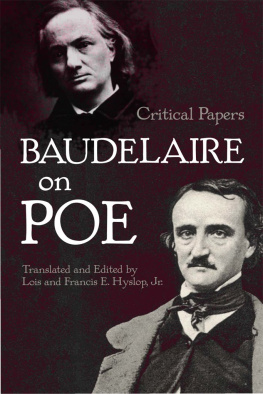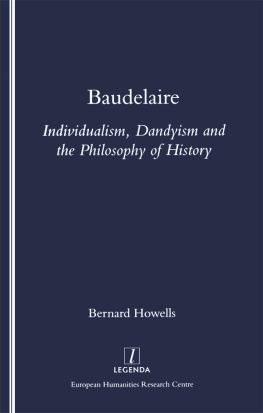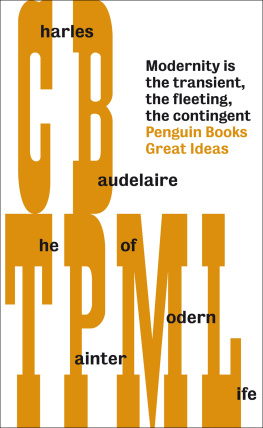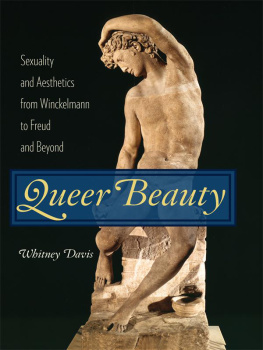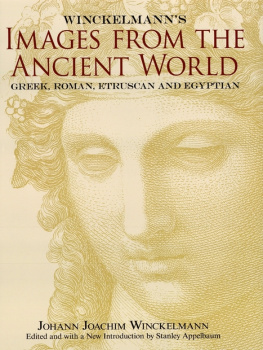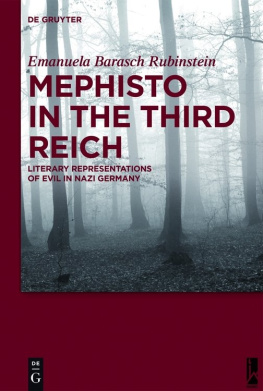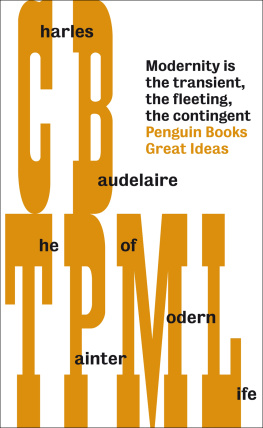Moshe Barasch - Modern Theories of Art: From Winckelmann to Baudelaire. 1
Here you can read online Moshe Barasch - Modern Theories of Art: From Winckelmann to Baudelaire. 1 full text of the book (entire story) in english for free. Download pdf and epub, get meaning, cover and reviews about this ebook. year: 1990, publisher: NYU Press, genre: Detective and thriller. Description of the work, (preface) as well as reviews are available. Best literature library LitArk.com created for fans of good reading and offers a wide selection of genres:
Romance novel
Science fiction
Adventure
Detective
Science
History
Home and family
Prose
Art
Politics
Computer
Non-fiction
Religion
Business
Children
Humor
Choose a favorite category and find really read worthwhile books. Enjoy immersion in the world of imagination, feel the emotions of the characters or learn something new for yourself, make an fascinating discovery.

- Book:Modern Theories of Art: From Winckelmann to Baudelaire. 1
- Author:
- Publisher:NYU Press
- Genre:
- Year:1990
- Rating:4 / 5
- Favourites:Add to favourites
- Your mark:
- 80
- 1
- 2
- 3
- 4
- 5
Modern Theories of Art: From Winckelmann to Baudelaire. 1: summary, description and annotation
We offer to read an annotation, description, summary or preface (depends on what the author of the book "Modern Theories of Art: From Winckelmann to Baudelaire. 1" wrote himself). If you haven't found the necessary information about the book — write in the comments, we will try to find it.
Moshe Barasch: author's other books
Who wrote Modern Theories of Art: From Winckelmann to Baudelaire. 1? Find out the surname, the name of the author of the book and a list of all author's works by series.
Modern Theories of Art: From Winckelmann to Baudelaire. 1 — read online for free the complete book (whole text) full work
Below is the text of the book, divided by pages. System saving the place of the last page read, allows you to conveniently read the book "Modern Theories of Art: From Winckelmann to Baudelaire. 1" online for free, without having to search again every time where you left off. Put a bookmark, and you can go to the page where you finished reading at any time.
Font size:
Interval:
Bookmark:
Thank you for buying this ebook, published by NYU Press.
Sign up for our e-newsletters to receive information about forthcoming books, special discounts, and more!
Sign Up!
A publisher of original scholarship since its founding in 1916, New York University Press Produces more than 100 new books each year, with a backlist of 3,000 titles in print. Working across the humanities and social sciences, NYU Press has award-winning lists in sociology, law, cultural and American studies, religion, American history, anthropology, politics, criminology, media and communication, literary studies, and psychology.
Modern Theories of Art, 1
Moshe Barasch
From Winckelmann to Baudelaire

Copyright 1990 by New York University
All rights reserved
Manufactured in the United States of America
Library of Congress Cataloging-in-Publication Data
Barasch, Moshe.
Modern theories of art, 1: from Winckelmann to Baudelaire/
Moshe Barasch
p. cm.
Bibliography: p.
Includes indexes.
ISBN 0-8147-1133-2 (alk. paper)
1. ArtPhilosophy. 2. Aesthetics, Modern18th century.
3. Aesthetics, Modern19th century. I. Title
N70.B2 1989 89-34682
701dc20 CIP
New York University Press books are printed on acid-free paper,
and their binding materials are chosen for strength and durability.
Book design by Ken Venezio
All illustrations appear as a group following p. .
The themes and doctrines presented in this volume have held my attention for many years. In the course of time I have been helped, or forced, to clarify and develope some of the ideasmainly by students, whose persistent questions I remember with gratitude. In pursuing the studies that led to this history of art theory I leaned heavily on the help of librarians. Wherever I came, they have offered me help and friendship. With particular gratitude I should record the assistance offered by the staff of the University Library in Jerusalem, and by the librarians at Yale University. It is a pleasure to acknowledge gratefully the lively and stimulating interest Mr. Colin Jones, director of New York University Press, has taken in this book. I was encouraged by him in all the stages of writing. In the process of publication the book has benefited from the care and devoted attention of Mrs. Despina P. Gimbel, managing editor of the press. Mrs. Mira Reich helped me in many ways, and not for the first time. I enjoyed the continuing help of Dr. Luba Freedman, colleague and former student. And, as with all the books I have written, I thank my wife once again for her particular blend of encouragement, criticism, and forbearance.
The Early Eighteenth Century
Students of letters are apt to balk at drawing sharply demarcated lines between periods. Such students, particularly when they have historical leanings, know better than most that, as a rule, the past persists in the present, and that what now seems the typical expression of the present has often been anticipated in the past. History is a constantly moving stream, and in this dynamic complexity the attempt to find, or establish, watertight compartments is almost a desperate one. This banal truth is valid, of course, also for the history of reflection on the figurative arts, that is, the theory of painting and sculpture. Particularly when we come closer to modern times, where the clarifying effect of historical distance offers us less support than in the case of the more remote past, the difficulties of periodization become more manifest. No wonder, then, that few will venture to suggest a precise date at which modern art theory begins. And yet students of our subject cannot help feeling that around the middle of the eighteenth century some events occurred that, small as they may seem, indicate a dramatic turning point in the tradition of aesthetic reflection on the visual arts, and thus can be taken to announce a new age. I should like to mention a few of these events. To most of the developments mentioned we shall have to come back in different contexts for more detailed discussions. Here I shall list them only in concise form. The crowding of these dates within the short span of fifteen years may indicate the profound transformation that becomes manifest at the middle of the century.
Precisely at mid-century, in 1750, Alexander Gottlieb Baumgarten, a student and teacher of Latin rhetoric and poetry, published a voluminous book bearing the word Aesthetica on its title page (after he had already used that term in the dissertation he had composed fifteen years earlier). Aesthetics, he said, denotes a special domain of cognition, namely the domain of sensual cognition. To be sure, in the hierarchy of cognitional modes sensual cognition occupies a lower rank than cognitions based on pure ideas of logical derivation, but it is recognized as a domain in its own right, with a distinct character. In Baumgartens presentation the domain of aesthetics is not clearly and firmly outlined, but it was only a short time before the term he coined came to denote what we now understand by it. Though originally not intended primarily for use in the discussion of the arts, it soon proved an excellent conceptual framework for such a discussion, and, as one knows, it has remained so till this very day.
Shortly after the publication of Baumgartens Aesthetica the attentive reader must have felt that he was witnessing a kind of eruption. The year 1755 proved particularly abundant in expressions of aesthetic thought. In that year Moses Mendelssohn published his Briefe ber die Empfindungen, trying to define the philosophical status of aesthetics. Since beauty is an indistinct image of a perfection, he believed, God can have no perception of beauty; this is a particularly human experience. In the same year a young and hitherto unknown schoolmaster and librarian, Johann Joachim Winckelmann, published a slim pamphlet, Thoughts on the Imitation of the Greek Works of Painting and Sculpture. The little treatise achieved a surprising success; the rich echo it found clearly shows that the ideas suggested in it were in the air, the generation waiting for them to be expressed. When only eleven years later Gotthold Ephraim Lessing, who in literary history is perceived in the role of Moses who led his people out of French servitude toward the promised land of Deutsche Klassik, published his Laocon (1766), he argued energetically against some of Winckelmanns assertions, but he clearly treated the ideas expressed in Thoughts on the Imitation as generally known and authoritative. Two years before that date, in 1764, Winckelmann, who in the meantime had moved to Rome, published his History of Ancient Art. It was the first work to use the term history of art as a description of a field of study, and the first to employ it in the title of the work. One can say that, in an important sense, the year 1764 is the year in which the history of art was born as an academic discipline.
The year 1755 proved crucial in still another respect. In that year began the more or less systematic archaeological excavations of Pompeii and Herculaneum. The impact on arts and letters of what these excavations brought to light was not uniform, but it was vivid and almost instantaneous. Already, a year before the beginning of the systematic excavations, Charles Cochin
Next pageFont size:
Interval:
Bookmark:
Similar books «Modern Theories of Art: From Winckelmann to Baudelaire. 1»
Look at similar books to Modern Theories of Art: From Winckelmann to Baudelaire. 1. We have selected literature similar in name and meaning in the hope of providing readers with more options to find new, interesting, not yet read works.
Discussion, reviews of the book Modern Theories of Art: From Winckelmann to Baudelaire. 1 and just readers' own opinions. Leave your comments, write what you think about the work, its meaning or the main characters. Specify what exactly you liked and what you didn't like, and why you think so.


